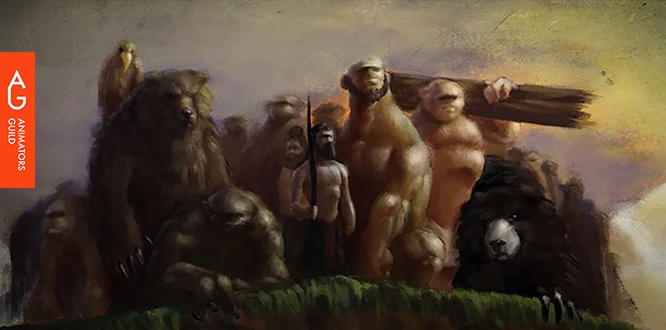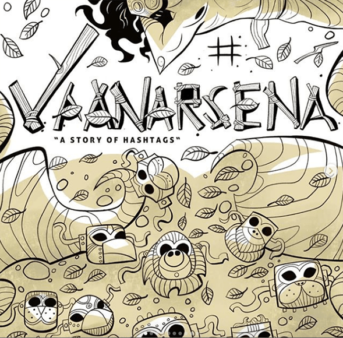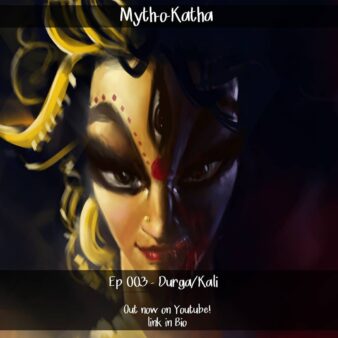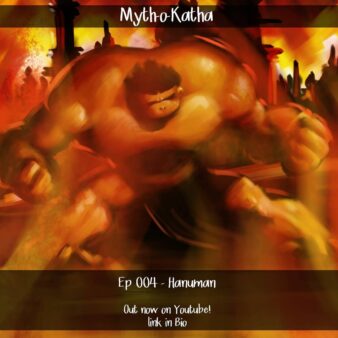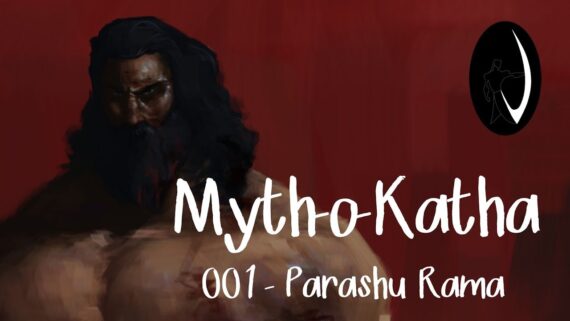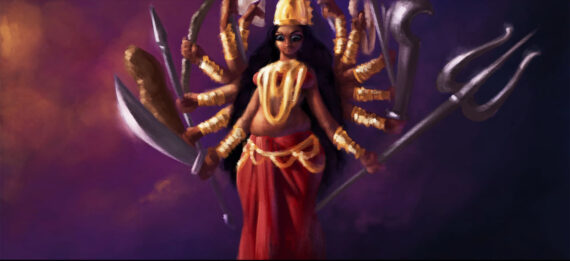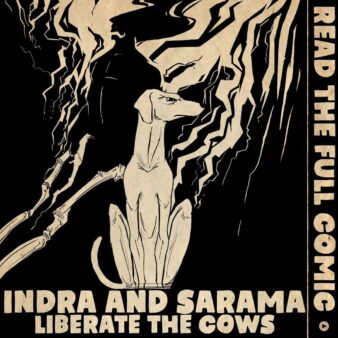Vaanarsena Studios & The land Of Bhaarat
Vivek Ram, as some of you must know, needs no introduction. He is a well-known computer-graphics and VFX artist in India, having worked on many Hollywood feature films (The Golden Compass, The Incredible Hulk, Night at the Museum, Happy Feet, The Mummy 3, Land of the Lost, and Fast and the Furious 3) and countless other projects. He is a self-taught artist, with over two-decades of experience in the Indian Animation industry.
We had an in-depth Q & A session with Vivek, who founded Vaanarsena Studios with a goal to tell Indian stories – especially stories from the land of Bhaarat - the subcontinent, the scriptures, and stories from villages and folklore. They aim to bring these stories to a global audience using the medium of Animation and Illustration. And they say if the universe wills it, one day we will see Indian shows produced by them.
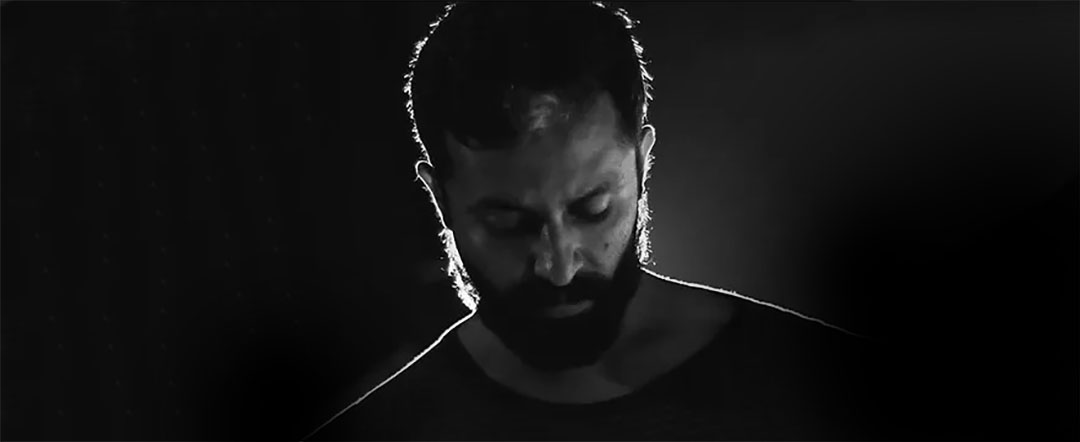
Hi Vivek Ram, thank you for taking time out to answer our questions. Can you tell us about your creative journey so far, from being 3d Animator for Hollywood Feature films in the early 2000s to becoming ‘Senapati’ at Vaanarsena Studios?
Oh wow, that's a long journey. It's been 20 years at this point. I’ve had a great run, doing pretty much everything an artist can hope for in his career. From being a freelance generalist, to modeler at Rhythm and Hues, to a character FX artist, layout artist and character animator at DreamWorks and then a Creative and visual effects supervisor at Assemblage Entertainment, i couldn't really have asked for a better career curve.
I’ve always loved working in India, and while I worked on over 15 Hollywood films and international projects in my career, it has always saddened me to see a lack of any high quality visual or storytelling within the Indian animation space. I've been trying to reimagine characters since childhood. Even through my jobs, I kept creating illustrations around Indian stories. It broke my heart, every time a new Ramayan or Mahabharat released, with below average quality of visuals or storytelling.
Vaanarsena was born out of this feeling. After 20 years, I figured it might just be the best idea to create the kind of films I wanted to see. A parallel need was to encourage and nurture the idea of artists and storytellers and not just employees or department specialists. The idea of the Sena and the Senapati was a result of this. The mission is to have each of our artists become full-fledged storytellers and filmmakers over time and to be able to deliver that with high quality.
How big is this ‘Vaanarsena’? And why stories from ‘The Land of Bhaarat’?
Currently we are a team of 4 artists. Me, Nikhil, Debosmita and Aditya. We call ourselves Volunteers or Vaanars as Vaanarsena has no commercial model for now. We create for the joy of creating and sharing stories and each of us puts in a large chunk of our day to do this while we hone our skills. We are also currently training about 40 artists, in basic drawing and animation and have about 40 more waiting to join us in future batches. This again is completely voluntary and free training, to help build the ecosystem of art and animation in India.
The entire focus of Vaanarsena is to help push forward Indian culture, Indian stories and Indian art. Stories that have shaped everything about who we are as Indians. When we say Indian stories, these stories are not bound by the current geographical borders of India, and are more a part of the Indian subcontinent, or Bhaarat as it used to be called, which is where the culture we have today comes from. This is the reason why our videos start with "welcome to the land of Bhaarat".
The ‘Myth-o-Katha’ series is a very interesting approach to showcasing small snippets of animation & information about each character; how did it originate? What was the thought behind it?
When we first started, the idea was to do full animated videos. One every month or maybe even 2!. The first one " Vaanarsena" was an attempt at making the quickest possible animated film and was made in 10 days. The second one "Durga" published a month later had a few more details and finesse. Although the response was great, I very quickly realised this was not a physically sustainable model for us. We started putting up illustrations and text on our instagram page, trying to figure out the next move. I remember creating a gif just for fun and the response was encouraging. 3-4 gifs later, this was a clear path forward, as we realized that this could be a new way to still stick to animation while we told shorter stories. Coming to the name, the idea of the stories being "myth" is a very western narrative. For India there was no real concept of myth or fact or fiction. It was always katha. the wisdom in the stories were far more important than historical factuality. None of the listeners of the stories would look at the stories as imaginitive or fiction either. Hence Myth-o-katha was born.
Whats the usual process involved in the creation of each character and their movements?
Firstly it has to be fun. Fun to make and fun to watch. if it's not fun, we don't do it. For the animations, we look at what possible motion or reaction would bring out a feel for the character that we are working on. If it's a story, we try to focus on what the main beats of the story are. Some stories are very long and with multiple layers. We try our best to distill out the beats since Instagram provides us with a limited boundary. When it comes to styles, we don't really think about consistency, at least not at this point. We want each of our artists to explore their own individual styles of work, so each of the stories, even though its weekly, tend to look fairly different. Even character designs tend to change based on each artist. Our simple guideline is to not be influenced by popular representations and really dig in a bit on just how you and me and regular people would live and breathe and talk, especially a millennia ago, so that we can pour that into our stories.
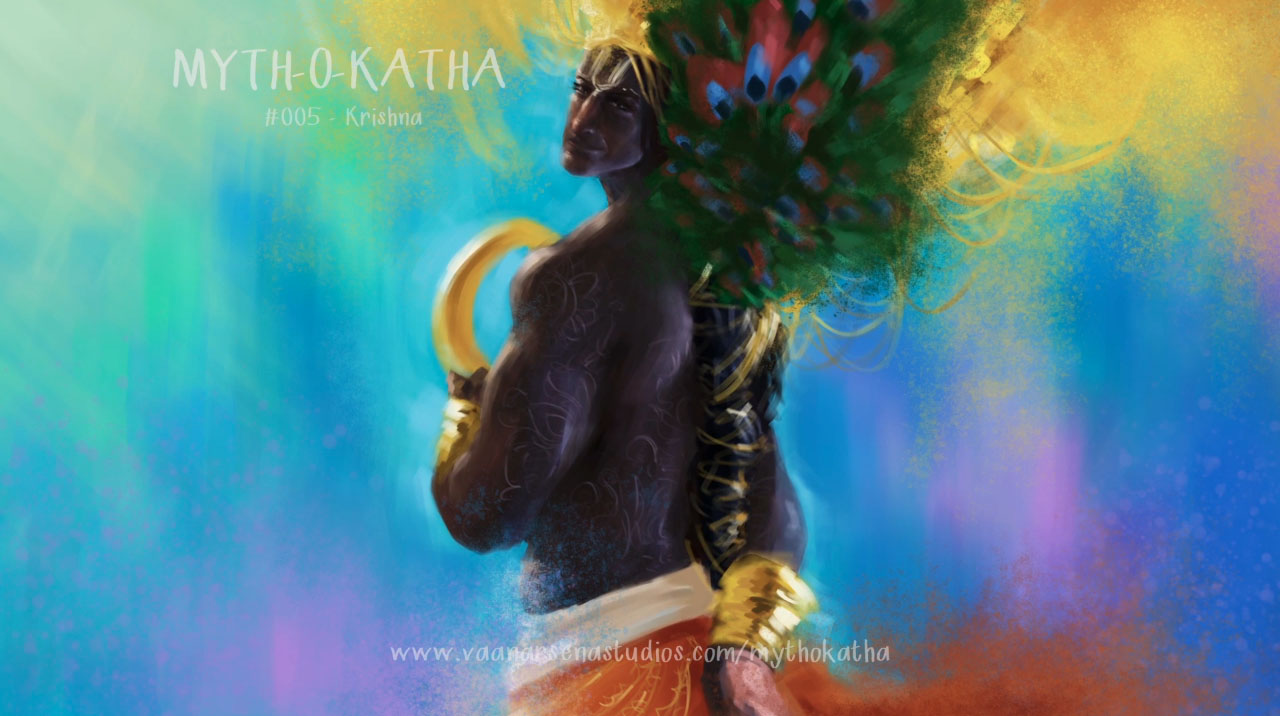
The portrayal of Dark skinned characters is very refreshing to see in context of the mostly fair-skinned Gods/Goddesses shown in Indian animation. The raw and tribalistic depiction of Hanuman or of Durga as being so feminine is something not much seen before. How has the audience / viewers reacted to it?
Thanks! This has been a very very conscious effort. As Indians, we are a shade card of browns - from light brown skin to the kind of dark that reflects blue. Over a period of time through history we Indians started segregating based on skin color , and characters like Krishna , Draupadi and Rama, celebrated for their dark skin, started showing up as blue or fair skinned. Like I've mentioned before, the design goal for us is to create a world that has been long forgotten with a strong grounding in reality. These should feel like living breathing people that we can relate to and look like the people around us. An example here is the word Vaanar , and one of its roots is Vana nara, or forest man. This gives the character a very valid reason to be tribal. Krishna is another one. The word Krishna, which is used for both Vaasudeva and Draupadi, quite literally means black. It was a no brainer for us to make them dark skinned. The audience so far has been very supportive of this. We've had many people write to us, about how much they love the representation of cultural and physical diversities in our art, and the characters feel like people they have felt or seen and can connect with.
There is a fine line between Mythology and History in Story-telling? How do you tackle this, do you try to stay objective in presenting ancient Indian stories that are very subjective (even personal) to a lot of people?
We do a ton of research before every story. If we are basing it off an existing purana or itihasa, we mention the source. If it's a folk tale we mention that, and we even mention if it's our spin on the story (as with Durga). The thing with the stories, in the older Indian cultures, as mentioned, it was neither history nor myth. The wisdom imparted by the stories was far more important than the stories themselves. So as storytellers retold them over time, the stories too changed to fit cultural context. The stories and their variations actually give you a great insight into the cultural and social behaviour of that time. This is also why, when we retell the stories, we look at how it can affect our current cultural atmosphere. There is no such thing as an authentic story in the Indian context that has survived millennia. Itihasa means, "this is how it took place" and purana means "from the past". Both definitions haven't stopped tulsi, or kamba or any such storytellers from the past from retelling the stories. Who are we to argue with this? We do this out of love for the stories and the culture, and we stay objective about the emotion when we present them. We stay true to the idea of being storytellers, just like our predecessors.
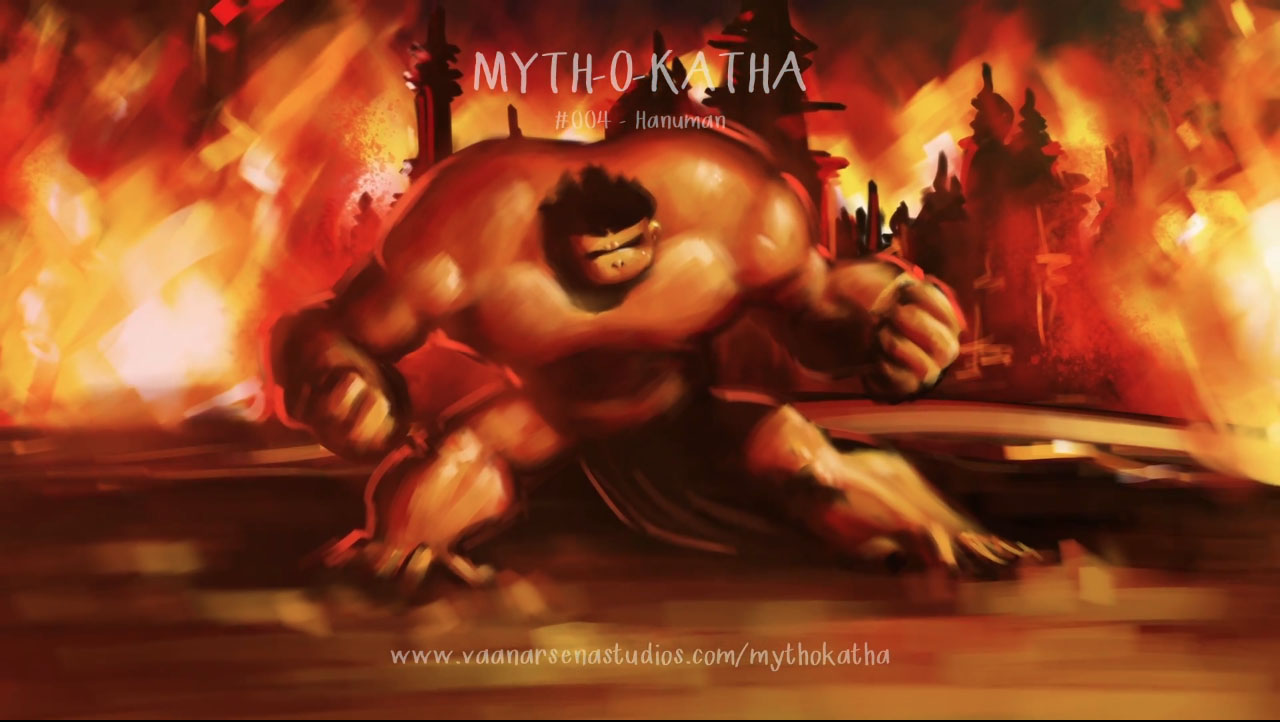
There seems to be a huge gap of Indian animated content for young adults. Also leaving aside very few films in the past, the words ‘Indian Mythology’ and ‘Animation’ mostly conjure up visuals of poorly produced content for kids. What are your thoughts on it?
Gap is an understatement. It largely does not exist. Unfortunately in India, we still believe animation is for kids. While internationally, animation for adults is picking up a lot of steam, this is still unexplored territory in India. Apart from a few short films, and now 'Bombay rose', we don't have animation targeted at adults or young adults. The industry still largely believes that adults won’t watch animation, even though there is a massive anime audience that proves them wrong. Hopefully we will see this change in time.
Coming to the topic of visuals, one of the first few 'current popular imagery' of the ancient people comes from Raja Ravi Verma. He was the one who popularized the imagery among the masses. This moved on to calendar art and the rest is history. This imagery combined with the birth of Hinduism as a religion, became a mixture that many have been very careful about playing with. Amar Chitra Katha, which we all grew up with, was great for its time but also stayed fairly within boundaries and cultural biases and context. This snowballs into visual media, as everyone who has attempted this, has been very "careful" about the subject, as there is an onus of research that has to come with responsible reimagination. Of course this research takes a lot of effort. In my memory, "Arjun - the warrior prince" was the only one to even attempt a reimagination in the animated medium. The legend of Prince Ram, although not really an Indian production, was a great film, but still stayed within the safe zone of designs.
This also works at an advantage for people who only want to see the financial gain out of the stories. Safe common designs, with current narratives of "mythology" has the biggest mass audience in India and is a fast way to get commercial success. A mass Indian audience is not quality conscious when it comes to animation or vfx, and people don't expect these narratives to surprise them. It's an easy win in India for studios and networks with a commercial focus.

On a similar line, what do you think is the single most reason for the lack of well-produced original Indian animated content (that doesn’t have anything to do with History or Mythology)?
We are not an industry that has had the time, or have put in the effort to find a voice or an identity yet. The Americans, western Asia and Japan have already had decades behind them to develop their voice and original stories. We dived in from day one into an outsource space and even today, the animation industry in India is an outsourced industry and not one of original content. Once we became a destination for cheap English speaking and skilled work, even the pricing for original content in local networks started competing with the "cheap" factor. It's almost impossible for a homegrown studio to sustain and then grow within the existing system by doing original content of high quality. Even a fantastic studio like Vaibhav studios took more than a decade before they could have a full show on air. It's not that we don't have the talent. But for now the ecosystem is not conducive to original good quality animated content. Hopefully this will change now, with the advent of OTT platforms and the ability to directly push for international releases. We also need to educate the producers about how much time, effort and money good animation can take. We also need more storytellers to tell Indian stories and dig into their own roots and experiences. This will need a lot of artists to push both collectively and individually to nurture the overall ecosystem. There's a lot of work to be done!
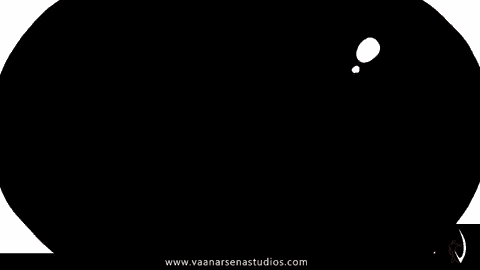
How has the current pandemic affected the working of the studio? How are you guys coping with the ‘new normal’?
Would it be wrong to say the pandemic has been amazing for us? Before the pandemic, the ability to volunteer or train with us was limited. Most people thought it might not be possible to train or volunteer with us remotely. Many didn't have the time or the interest to pursue this, at no financial benefit. We were 3 people before lockdown. Post lockdown we have about 40 trainees! I guess that number speaks for itself! We've also gotten into a great rhythm working remotely, so I guess the new normal will stay for us, even when the world gets out of lockdown. We've also seen a massive spike in the traction on social media, as more people spend time looking for content online. Our comics have had a great response and all our social media engagement numbers are on the rise.
What are the tools / softwares that you use currently? Do you still use ZBrush? Or have you completely transitioned into 2d workflow?
We work entirely on Blender and Krita now. The new blender is just crazy powerful, for both 2d and 3d production. Being entirely voluntary, the open source foundation really works well for us. I honestly haven't touched Zbrush in forever. Almost feels like another life at this point. Just last week I took a look at Zbrush after almost a decade and honestly, I felt old!
For Vaanarsena, the goal is to focus on traditional 2d animation for now. If its not hand drawn, its not something we are currently exploring. It’s a fairly new zone for me to be honest. I have about 18 years of 3d experience, but with 2d I'm just 2 years old. It's a beautiful medium that I fortunately stumbled upon and we will stick with it for a while until we feel like we are strongly established in it. 3d will surely be on the cards for the future.
Have you considered using new & emerging technologies (AR / VR) for a more immersive story-telling experience?
Yes we have! We attempted AR with Mythokatha a year ago. Built an app for android and iOS. Unfortunately, we were too small physically and financially back then to sustain the backend of it. We will surely be looking into it again in the future. For now regular traditional 2d is where our main focus lies.
Are there any exciting projects that you wish to talk about - anything current or upcoming? Also when can we see a long format of these wonderful stories?
Glad you asked. We showed off our work a bit at the Kidscreen event that took place in Miami earlier this year. The response was very encouraging. Apart from the content you see on our social media, we are currently working on a few short films that will be a proof of concept for a series. We are pulling all our stops on this one. The last visual benchmark for us was the logo animation, and this short film is surely gonna be our next benchmark. The current runtime for this is about 9 minutes. This should be hitting the festival circuit early next year. Yes the film is based in Ancient Indian Stories, but unfortunately we can't reveal anymore at this point. We've also loosely showcased an episodic tv show to a few producers and are in the process of developing it further. Will have more to talk about later this year!
Who are your favorite artists or people that inspire you?
I'm a huge fan of Michelangelo for art, and Glen Keane for animation. I love it when the designs aren’t too stylised and border more on realism. There's a ton of artists I follow now and am inspired by but will be tough to remember and list. In the Indian scene I'm a huge fan of Vaibhav studios and Animagic. If anyone has made an impact on the original animation scene in India it would be them.
What excites you outside of art & animation?
Oh there's a ton of things that go on in my day outside of animation. That might just be a whole another interview! There’s reading, and travelling, and dogs, and music, and meditation, and sports, and farming, woodwork, and family, and friends... and did I mention dogs? Living excites me. If you don’t live, it will show in your work, it will show in your stories and your art.
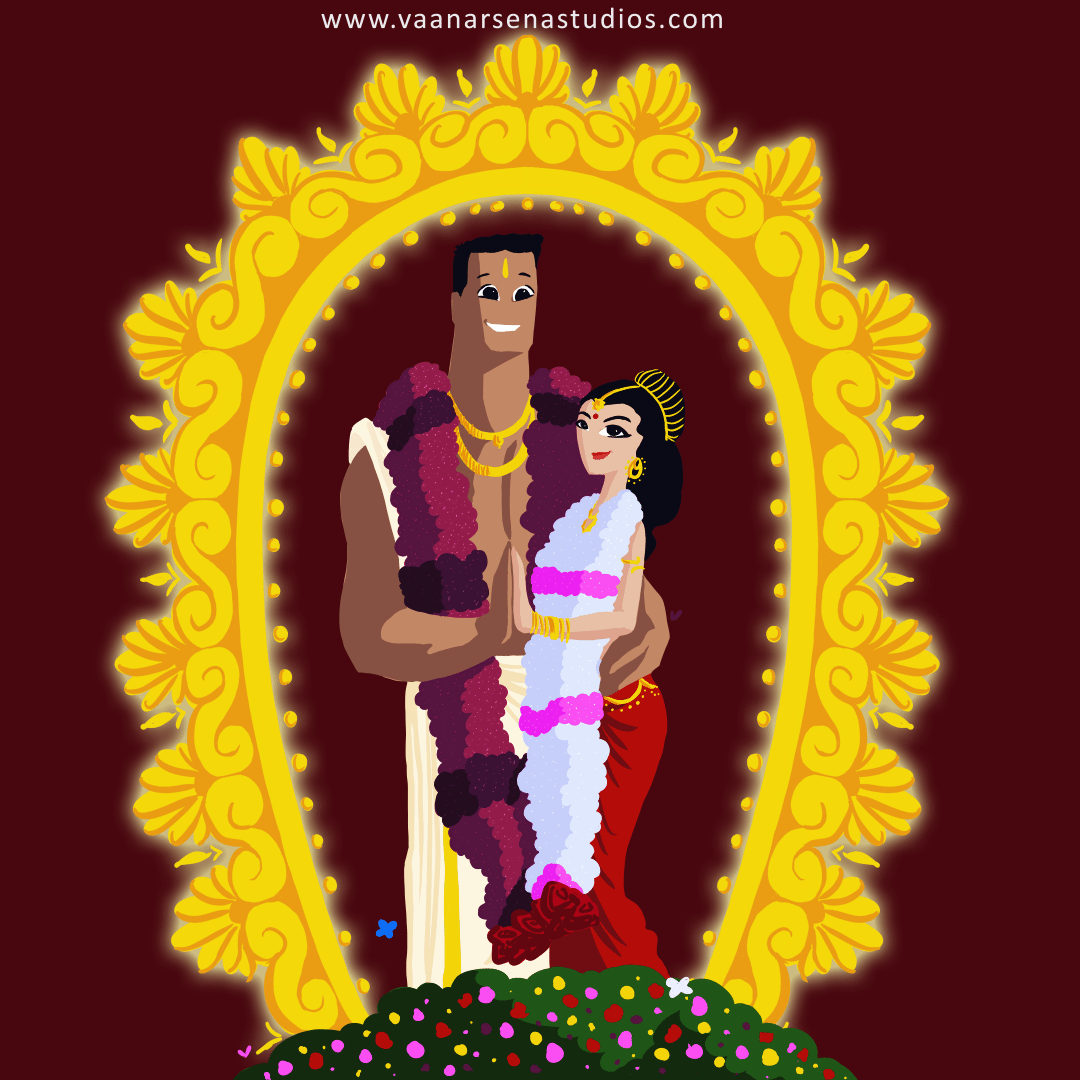
Any parting words / thoughts for people who are trying to break into animation & tell Indian stories?
Animation is an art form. Treat it as such. Find and have a voice as a storyteller. Don't get caught up in "what works" or "what is trending". Art and storytelling is expression, so stay true to what you as an individual or a collective wants to express, no matter who disagrees with your voice.
If you're a young animator, find mentors and guides who have attempted this in the past and who's work appeals to you. Pick up a job at a top class studio for a while before you start freelancing or setting up independent studios. I see a lot of the younger animators groping in the dark and jumping steps and being satisfied with social media acclaim with very little to talk about in terms of skill and perfection of the craft.
Again we thank Vivek for taking the time to answer our queries. We wish the team of Vaanarsena all the best for their endeavours in future.

